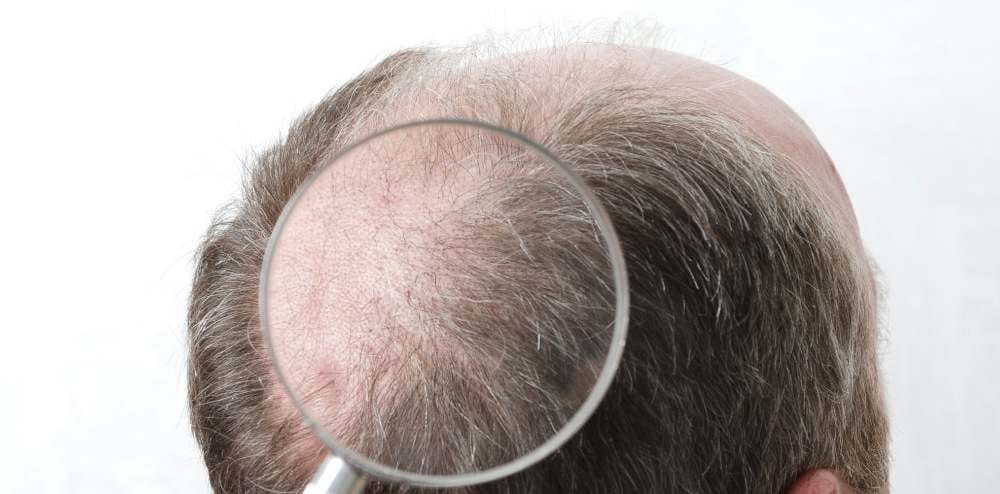The relationship between male pattern baldness and testosterone is complex and widely misunderstood. Male pattern baldness (MPB) is a common condition that affects millions of men worldwide. It is characterized by a receding hairline, thinning hair on the crown, and eventually complete baldness. Many people believe that baldness is caused by high levels of testosterone, but this is not the case. In fact, bald men often have lower levels of testosterone than the average man.
Testosterone In The Body
The correlation between testosterone and hair loss is complex and involves different forms of testosterone in the body. Testosterone is the primary male sex hormone and is produced in the testes. It is responsible for the development of male secondary sexual characteristics, such as a deeper voice, facial hair growth, and muscle mass. There are two forms of testosterone in the body: free testosterone and dihydrotestosterone (DHT).
Testosterone VS Dihydrotestosterone (DHT)
Free testosterone is not bound to proteins in the body and is most available to act within the body. Testosterone can be bound to albumin, a protein in the blood, or to sex hormone binding globulin (SHBG), a protein that is not active. On the other hand, DHT is made from testosterone by an enzyme called 5-alpha reductase, and it is five times more potent than testosterone. DHT is primarily used in the skin, hair, and prostate.
The actions of DHT and the sensitivity of hair follicles to DHT is what causes hair loss. When hair follicles are sensitive to DHT, the hormone can cause the follicles to shrink, leading to a decrease in hair growth. Over time, the hair follicles will become smaller and smaller, leading to complete baldness. The sensitivity of hair follicles to DHT is determined by genetics.
Hair loss is a genetic condition, and it is not how much your body has testosterone or DHT that causes baldness, but rather the sensitivity of your hair follicles to the hormones. Additionally, other factors, such as age, stress, and lifestyle, can play a role in the onset of hair loss.
It is a common misconception that men with male pattern baldness have higher levels of testosterone than the average man. Actually, men with MPB can have lower circulation of testosterone but higher levels of the enzyme that turns testosterone into DHT. On the other hand, they may just have genes for hair follicles that are sensitive to DHT or testosterone.
Treatment Options
There are several treatment options for hair loss, including medications, laser treatment, and hair transplant. The most common medications for hair loss are finasteride and minoxidil. Finasteride works by blocking the production of DHT, while minoxidil stimulates hair growth by increasing blood flow to the scalp. Laser treatment uses low-level laser light to stimulate hair growth and slow down the progression of hair loss.
Hair Transplant
The only permanent solution to male pattern baldness is hair transplant. Hair transplant is a surgical procedure that involves taking hair follicles from one part of the body, such as the back of the head, and transplanting them to the balding area. The procedure is performed under local anesthesia and is typically completed in one day. The transplanted hair follicles will grow naturally and will be permanent, providing a long-term solution to hair loss.
If you are considering a hair transplant, it is important to consult with a qualified and experienced hair transplant specialist. The specialist will examine your hair and scalp and provide an individualized treatment plan based on your specific needs. They will also answer any questions you may have about the procedure and help you understand what to expect before, during, and after the operation.
In conclusion, the relationship between male pattern baldness and testosterone is complex and widely misunderstood. Baldness is not caused by high levels of testosterone, but rather by the sensitivity of hair follicles to the hormone dihydrotestosterone (DHT). Hair loss is a genetic condition and can be influenced by various factors, including age, stress, and lifestyle.
There are several treatment options for hair loss, including medications, laser treatment, and hair transplant. Hair transplant is the only permanent solution to male pattern baldness and involves transplanting hair follicles from one part of the body to the balding area. The procedure is performed by a qualified and experienced hair restoration specialist and can provide long-lasting results.
If you are experiencing hair loss, contact us now to determine the best course of action for your specific needs. With a hair transplant, you can restore your hair and regain your confidence. So, if you are looking for a permanent solution to your hair loss, consider a hair transplant today. Let’s guided throughout your journey to thick and healthy hair.








